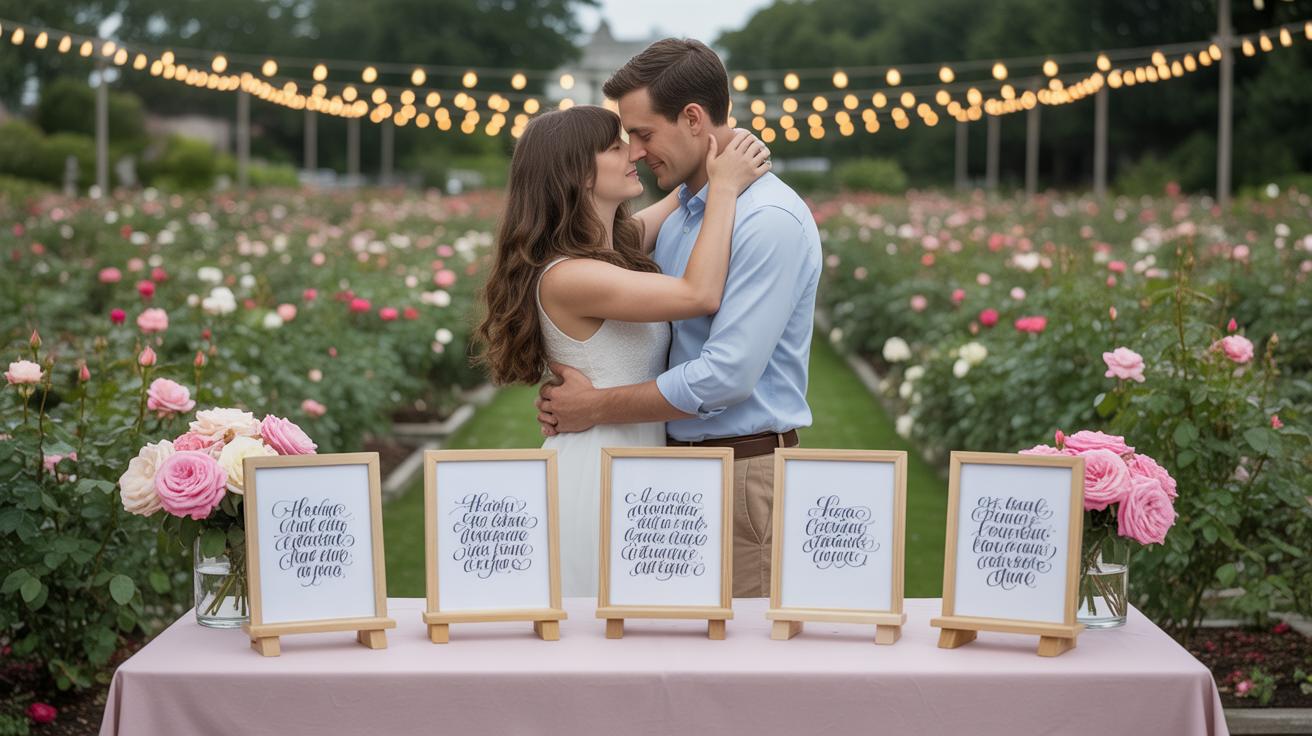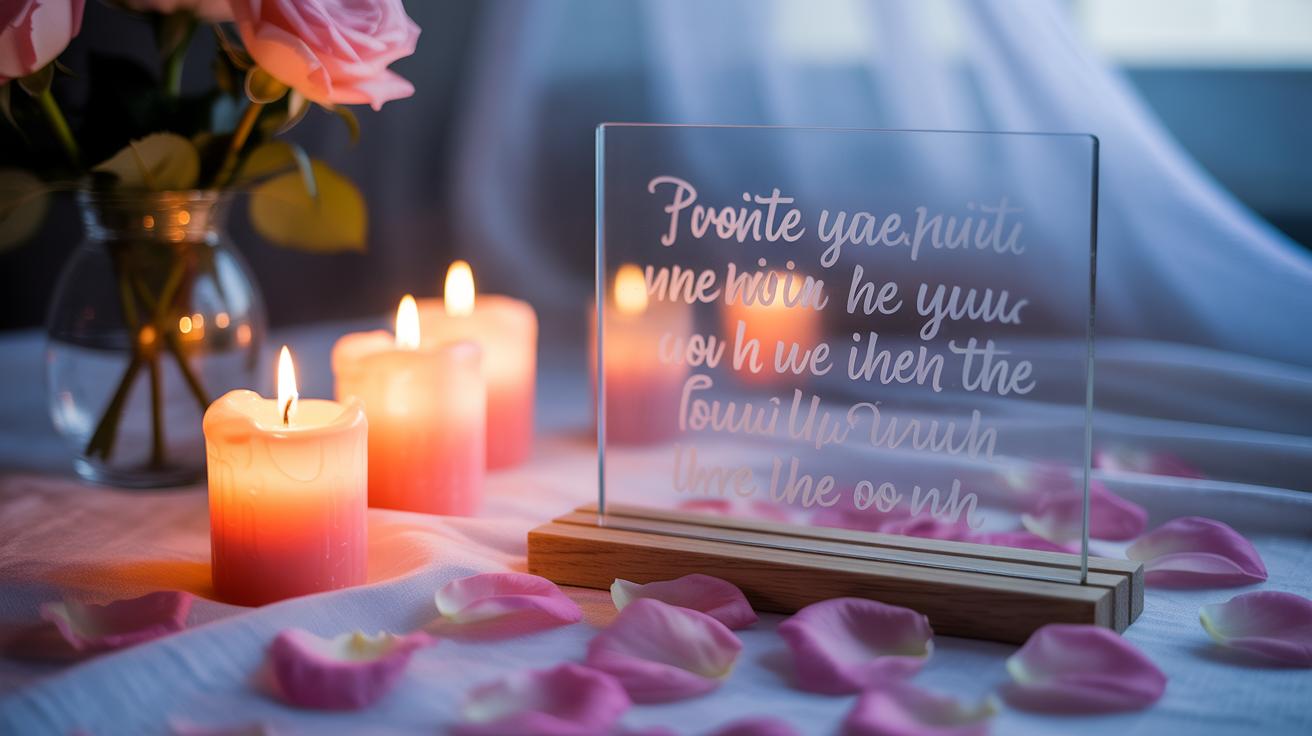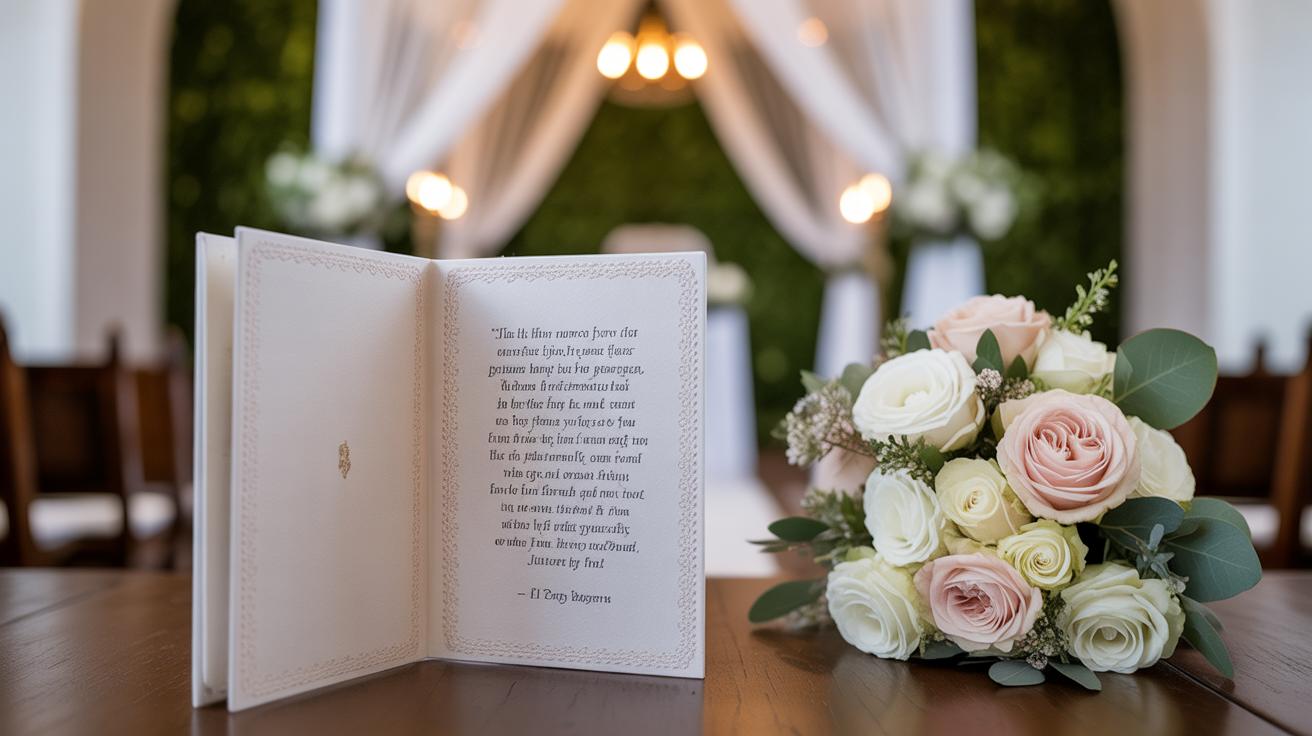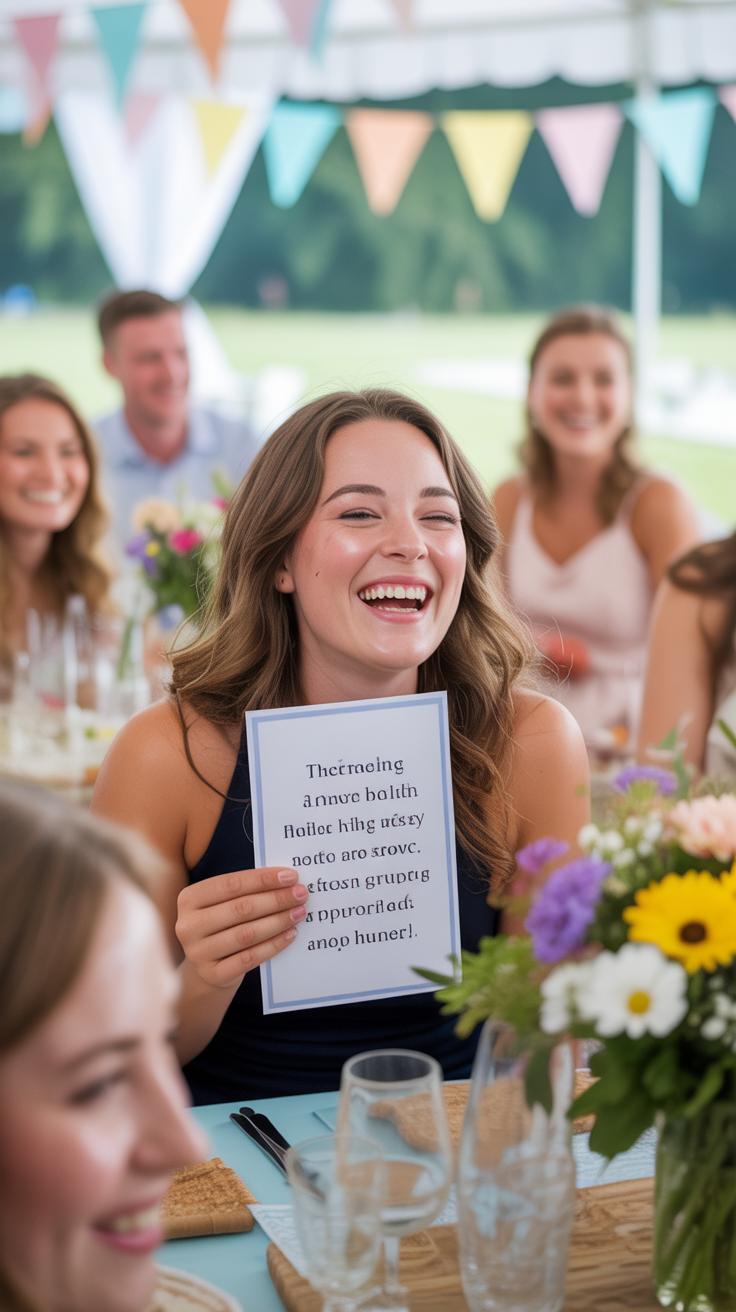Introduction
Giving a wedding speech is an important task that allows you to share your feelings and best wishes with the couple and guests. A memorable wedding speech can bring laughter, touch hearts, and create lasting memories. This guide will help you understand how to prepare and deliver a speech that stands out.
We will cover useful tips on planning what to say, organizing your thoughts, and speaking with confidence in front of an audience. Whether you are the best man, maid of honor, or a close family member, these tips will make your speech clear and special for everyone listening.
Planning What to Say in Your Speech
Choosing what to talk about isn’t always easy. You want your speech to feel genuine but also meaningful, which means picking topics that really matter to you and the couple. Think about moments that stand out—small stories that reveal who they are or how they’ve grown together. It could be something simple, like the way they support each other during tough days or a shared hobby that brought them closer.
Remember, this isn’t a performance. Your voice—how you speak and what feels natural—is what will make your words stick. Don’t force yourself to sound polished if it feels stiff. Sometimes, a bit of hesitation or an informal tone can make your message even more relatable. What do you want people to walk away thinking or feeling? Keeping that in mind helps you stay focused.
When deciding on topics, try to balance humor and sincerity without veering too much either way. You don’t have to cover everything. Instead, aim for a few clear points—qualities of the couple, personal anecdotes, maybe some wishes for their future. If you find yourself drifting off or including too many details, pause and ask: Does this really add to the story I’m telling?
It can help to jot down ideas first, then narrow them down. Sometimes, what feels important at first might not translate well to a speech. Reading over your notes out loud can reveal what flows naturally. And don’t hesitate to ask for feedback from someone you trust. They might spot parts that seem confusing or irrelevant.
Overall, keep the message a little simple and straightforward. After all, you’re celebrating love and connection—there’s no need to overcomplicate it. The clearer your message, the easier it is for everyone to connect with it, even those who don’t know the couple as well as you do.
Choosing Stories and Messages
When you start thinking about your speech, focus first on what really matters to this couple. What stands out about them? Maybe it’s how they support each other or their sense of humor. Pick a few simple stories that show these qualities clearly. You don’t need to go overboard with details—short and to the point usually works best.
Think about moments that felt genuine or funny but still respectful. These little snapshots say a lot without needing explanation. If you’ve got a story that reflects their personality or love, that’s gold. Just watch out for anything that might feel too private or awkward for an audience—you want positive, uplifting examples.
And remember, staying authentic is key. Don’t try to be someone you’re not. Your voice matters here. If you’re naturally funny, a touch of humor is fine. If you’re more serious, that’s okay too. Keep your message clear so people can really connect with what you say.
Organizing Your Ideas
Once you have your stories and key points, it’s time to put them in order. Think of your speech like a simple story with a beginning, middle, and end. Starting strong helps—maybe a quick joke or a thoughtful observation that grabs attention without feeling forced.
The middle is where your stories fit naturally. Arrange them so they flow well, guiding the audience through the couple’s journey or traits you want to highlight. Try to avoid jumping around too much—it can confuse listeners.
End with something memorable. A toast, a heartfelt wish, or a clear message about love or partnership can leave a good impression. You want people to remember the feeling you created more than the exact words you said.
Planning what to say is a balance between sharing meaningful stories and keeping things simple enough to follow. It’s okay if your thoughts wander a bit—sometimes that makes your speech feel more real. Just try to bring it back gently and keep the focus where it belongs: on the couple.
Writing Your Speech Clearly and Simply
When you write your wedding speech, aim for clear and simple language. Using short sentences makes it easier for everyone to follow. Long, complicated sentences can confuse your audience, especially during an emotional moment like a wedding.
Try to use active verbs and direct statements. Instead of saying, “The cake was eaten by everyone,” say, “Everyone ate the cake.” The second sentence feels stronger and more immediate. It keeps your speech lively and real. Don’t be afraid to cut down long sentences into smaller chunks. It can feel a bit awkward at first, but it really helps the message come across.
Here are some quick tips you might want to keep in mind:
- Choose everyday words over fancy ones. For example, say “happy” instead of “elated.”
- Replace phrases like “in the event that” with “if.”
- Turn passive sentences into active ones. For example, change “They were given a warm welcome” to “We gave them a warm welcome.”
- Avoid jargon or words that feel out of place in personal stories.
Sometimes, it’s tempting to use complex phrases when you want to sound a bit more formal or impressive. But honestly, simple language often connects better. A sentence like, “I feel so proud to see you both happy,” works better than a sentence stuffed with big words but no heart. When you speak from the heart in plain language, people respond to that.
Think about how you speak naturally. Does your sentence end up too long or twisty? You might want to break it up. Keep your points clear. And when in doubt, read your sentences out loud to check if they sound easy and natural. You might catch something that looks okay on paper but feels clunky when spoken.
Practicing Your Speech Effectively
Practice isn’t just about memorizing words—it’s about finding your own rhythm with the speech. You might think that rehearsing a few times is enough, but the truth is, repeated practice smooths out awkward pauses and helps your delivery feel natural rather than stiff. It’s one thing to know your lines; it’s another to speak them comfortably.
Try reading the speech aloud in front of a mirror. You can catch little things there—maybe you fidget, or the way you move your mouth on certain words. The mirror shows you more than you realize. If the thought of solo practice feels odd, gather a small group of friends or family. They provide an audience and that adds a bit of pressure, which is actually useful. Plus, their reactions might surprise you—sometimes a joke that lands perfectly in your head falls flat in real life.
Pay attention to your timing. Are certain sentences too long or complicated? Can you pause naturally without breaking the flow? Feel free to try different ways—speak slower on some parts, faster on others—to emphasize your message. These exercises bump up your fluency and build confidence before the big day.
Rehearsing Out Loud
Reading your speech out loud is where you really start to understand it differently. Some sentences sound great when you write them down but stumble when spoken. That’s normal. When you say your words aloud, it’s easier to spot tricky phrases or confusing parts you might want to rephrase.
Pay close attention to your voice—are you speaking clearly? Are your words running too fast or dragging? Try focusing on breath control, too. Sometimes, you might realize you hold your breath or rush through a passage, which changes the feel completely. Reading out loud helps you adjust your pace and tone, making your speech easier for everyone to follow.
Gaining Feedback
Sharing your speech with a few trusted people can feel a bit vulnerable but is usually worth it. You can ask friends or family who know the couple well or who have experience speaking in public. Their feedback can highlight parts that are confusing or ideas that need to be emphasized more.
Don’t be surprised if you get mixed reactions. One person might love a joke while another finds it slow. Use that variety to think about how your audience might receive your speech. Sometimes, feedback can nudge you to cut down on a part you’ve grown attached to but that doesn’t quite fit. Other times, it boosts your confidence when you hear positive remarks. Both outcomes are useful, as they refine your message and delivery.
Managing Nervousness During Your Speech
Nervousness before and during your wedding speech is totally normal—almost everyone feels it. What matters is how you handle those jitters so they don’t take over. One surprisingly simple way to stay grounded is through breathing. Try this: take a slow, deep breath in for four counts, pause for four, then slowly breathe out for another four. Repeat a few times before stepping up. It’s not about breathing perfectly—it’s about giving your body a moment to relax, which helps steady your voice and slows racing thoughts.
During your speech, if you feel your heart racing or your voice shaking, pause and breathe quietly for a few seconds. It breaks the tension, and often, your audience won’t even notice.
Using Breathing Techniques
Steady breathing keeps you in control, really. When nerves kick in, you might start to rush or speak unevenly. Controlled breathing counters this. It anchors your voice and helps you think clearly. You don’t need complicated routines—just a simple pattern when you’re backstage or even mid-speech. For instance, before starting, try inhaling deeply through your nose, hold it briefly, and exhale slowly. This calms the physical symptoms of anxiety and lets you focus more on what you want to say.
Thinking Positively
Imagining success might sound cliché, but picture this: the faces in the crowd are warm, smiling, and encouraging. Most people at weddings want you to do well—they’re not waiting to catch a slip-up. Imagine them nodding or chuckling in the right places. This simple shift diverts your mind from fear to connection.
Sometimes, focusing on how meaningful the moment is—the joy, the love shared—not just the performance, can ease pressure. It’s a bit tricky, because part of you might worry about messing up, but try to concentrate on the reason you’re speaking in the first place. This mental focus often makes anxiety fade, or at least become manageable. Does it erase all fear? Probably not. But it changes the nature of that fear enough to help you get through it.
Delivering Your Speech with Confidence
Body language says more than words ever could. Standing straight, not stiff but upright, gives an impression of control. Try to avoid crossing your arms or putting your hands in your pockets—it can seem closed off, like you want to hide. Instead, use open gestures that feel natural. Maybe your hands move when you tell a story—that’s good. It helps people see you’re engaged, and it makes what you say more believable.
Eye contact matters a lot, though it’s tricky. Don’t just stare at one person—that gets awkward fast. Instead, look around the room slowly. Find a few friendly faces and let your gaze linger for a moment before moving on. It shows you’re speaking to the whole group, not just reading off a script. You might catch smiles or nods, which could boost your confidence mid-speech.
Your voice should be clear, not rushed or mumbled. Speak loud enough so the people at the back can hear you without shouting. But there’s more than volume—pausing helps. When you pause just before or after a key point, it gives your audience time to absorb what you said. Plus, it makes you seem calm and sure of yourself. Don’t forget to smile occasionally—it softens your tone and invites warmth. It’s one of the easiest ways to connect naturally with the crowd, like you’re sharing something genuine, not just performing.
Including Humor Appropriately
Using light humor in a wedding speech can make it more enjoyable and memorable. People respond well to laughter—it helps break the tension and draws everyone in. But humor has to be handled carefully, especially at weddings where emotions run high. An offhand comment might land poorly even if you don’t mean it that way.
Think about gentle jokes or funny stories related to shared moments, like playful quirks of the couple or amusing mishaps during planning. For example, mentioning how the groom nervously practiced his dance moves to impress the bride can get smiles without crossing any lines. Simple and warmhearted humor usually works best.
Choosing Kind Humor
The key is picking humor that is positive and inclusive. Avoid jokes that single out someone in a way that might embarrass or upset them. You want everyone to feel comfortable and included, not uncomfortable or confused. Steer clear of anything that touches on sensitive issues like past relationships, family tensions, or unflattering habits unless you’re absolutely sure the couple is fine with it.
Try to choose anecdotes that celebrate the couple’s good qualities or endearing moments. For instance, a light joke about how the bride patiently tolerated the groom’s obsession with barbecue grills can be funny without being mean-spirited. The focus should stay on what brings people together.
Timing Your Jokes
Timing is, honestly, a big part of whether humor succeeds or falls flat. Deliver jokes with enough clarity and space for people to react. Pausing right after a punchline gives the audience a moment to laugh or smile—it feels natural and lets the humor land properly. If you rush on, the joke can get lost or seem awkward.
Sometimes, just a slight hesitation before the punchline builds anticipation—though this depends on your style. Watch your audience too; if their laughter dips, maybe adjust by shortening jokes or switching to lighter remarks. The goal is to keep the speech warm and engaging, not to perform a comedy show.
Ending Your Speech Strongly
When you wrap up your wedding speech, aim for something simple and sincere. A heartfelt wish or toast can really stick with people long after the applause fades. Don’t feel you have to be overly elaborate—sometimes the most memorable endings are the quietest. You want your final words to feel natural, like something you truly mean, not just a line you memorized.
Try briefly highlighting the core of what you’ve shared—whether it’s a quick nod to a story, a quality of the couple, or a shared value. This helps tie everything together without dragging the ending out. Something like, “Seeing you two together reminds me that love really is about patience and laughter,” works well.
When it’s time for the toast, invite everyone to raise their glasses in a way that feels warm but respectful. You might say, “Let’s lift our glasses to celebrate a lifetime of happiness for [names]. Here’s to love, friendship, and everything that’s yet to come.” That kind of invitation is clear but leaves space for people to bring their own feelings to the moment.
Remember—keeping your final lines simple and genuine makes the speech feel honest and leaves a real impression.
Conclusions
Crafting a wedding speech can seem challenging, but breaking it down into clear steps makes it easier. Remember to focus on your message, practice well, and speak from the heart. Your honest words will touch the couple and the guests.
Every speech is unique, and yours can be too. Approach it with care and excitement. When you speak kindly and clearly, your wedding speech will be a moment people remember with joy for years.























